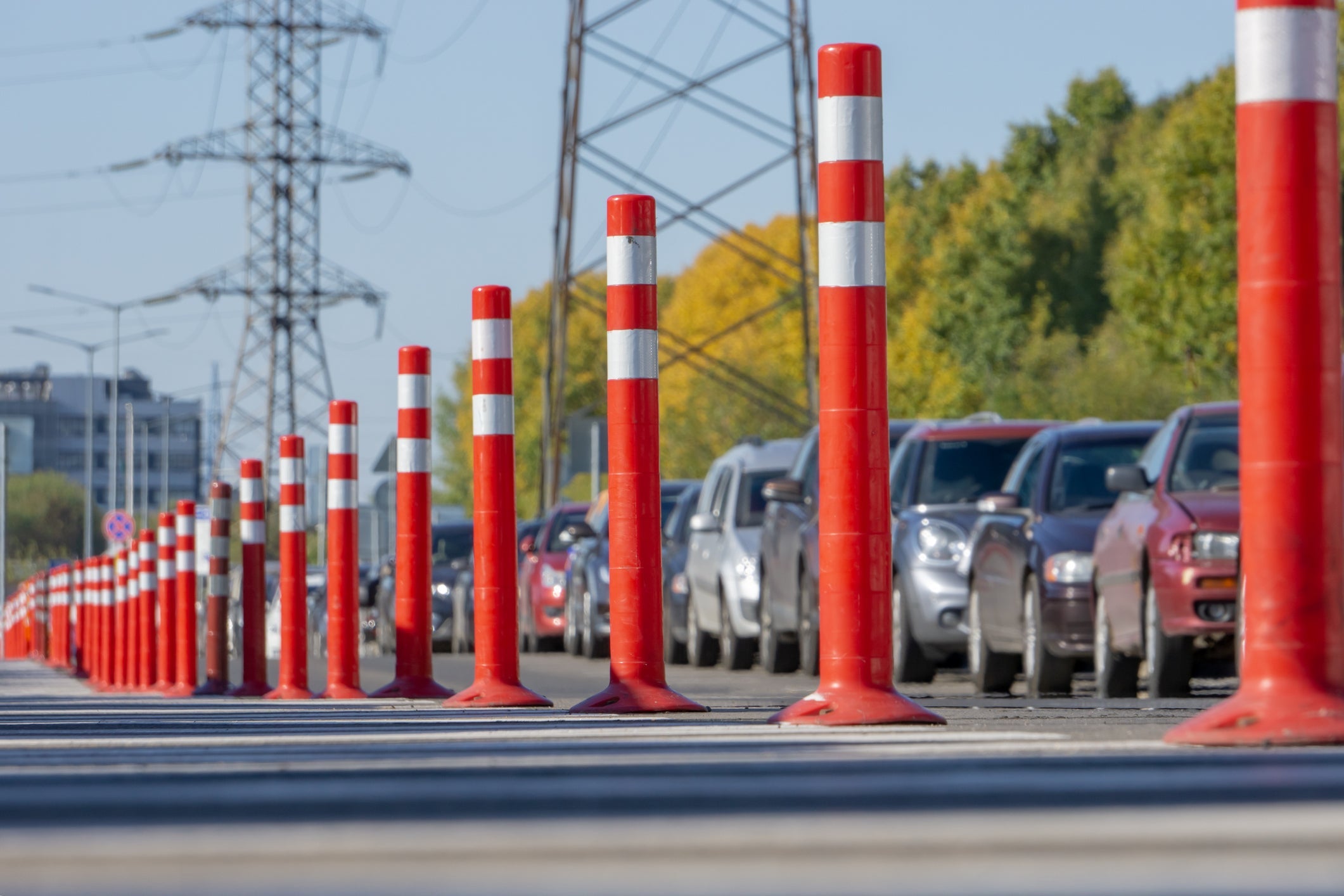Delineators are vertical traffic safety devices used to guide vehicles, protect pedestrians, and enhance crowd control. Whether you're managing a construction site, parking lot, or public event, choosing the right delineator type and placing it according to OSHA and MUTCD standards is essential. You can find high-quality delineators at eDisasterSystems.com.
What Are Delineators?
Delineators are upright, often brightly colored posts used to mark and guide the flow of traffic or pedestrian movement. They serve as a visual cue for lane boundaries, walkways, construction zones, or areas where entry is restricted. Most are flexible and feature reflective bands or high-visibility colors to maximize visibility in all lighting conditions.
Why Are Delineators Critical in Safety Zones?
Whether you’re controlling vehicle movement or crowd behavior, delineators are essential tools for:
- Reducing collision risks
- Guiding drivers safely through detours
- Separating pedestrian walkways from vehicle lanes
- Marking hazard zones during construction or emergencies
They're commonly used in parking areas, road construction, event management, and warehouses.
Common Types of Delineators
1. Tubular Delineators
These are flexible vertical tubes with one or two reflective bands. They're great for high-traffic areas where collisions are possible, as they bounce back into shape.
2. Post-Mounted Delineators
Mounted on a fixed base or socket, these are more rigid and are ideal for permanent or semi-permanent installations.
3. Cone-Top Delineators
Designed to mount directly onto traffic cones. They provide extended height and visibility. Visit our Traffic Cones collection to pair with these accessories.
4. Reboundable Delineators
Built for durability and flexibility, these rebound after being struck, making them ideal for highways and construction zones.
5. Reflective Delineators
Feature high-intensity reflective sheeting or bands, improving nighttime or low-light visibility.
You can browse our full delineator collection here.
Best Practices for Delineator Placement
- Spacing: Typically 20–50 feet apart for roadway applications.
- Orientation: Place to face oncoming traffic or foot traffic.
- Height: Follow MUTCD standards—generally 36” to 48”.
- Reflectivity: Use Class 1 or 2 reflective materials for low-light areas.
OSHA and MUTCD Compliance
The Manual on Uniform Traffic Control Devices (MUTCD) and OSHA both specify that delineators must be durable, visible, and correctly spaced. Our delineators meet these safety standards and are suitable for use in both federal and state-regulated projects.
Where to Use Delineators
- Highway shoulders and medians
- Warehouse aisles and logistics centers
- Concerts, fairs, and other events
- Construction zones and detours
- Retail or hospital parking lots
Need more safety tools? Explore our full Traffic Safety Supplies section for barricades, cones, and reflective tape.
Maintaining Your Delineators
- Inspect monthly for cracking or fading
- Replace reflectors or bands if damaged
- Reposition or realign if knocked over
- Use weighted bases for extra stability in windy zones
Where to Buy High-Quality Delineators
At eDisasterSystems.com, we carry a wide range of OSHA-compliant and MUTCD-approved delineators and traffic control gear. From flexible posts to reboundable bases, we’ve got the inventory and bulk discounts you need.
Final Thoughts
Delineators are more than plastic posts—they’re life-saving safety devices in traffic and crowd control zones. Whether you're managing a parking lot, roadside repair, or major public event, investing in quality delineators makes your job safer and more professional.
About the Author:
Mick Chan has been in the Safety Supplies industry for over 15 years. As a seasoned expert in OSHA compliance and safety product procurement, Mick brings practical insight to help businesses meet workplace safety standards with confidence. He earned his Bachelor’s in Business Administration from Cal State LA in 2013 and grew up in San Gabriel Valley, California.

